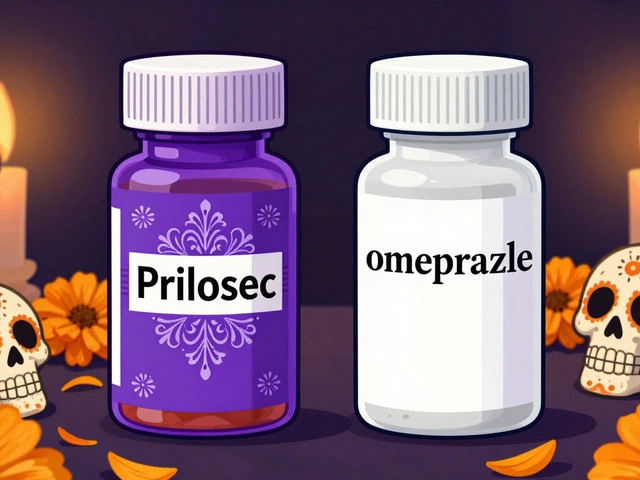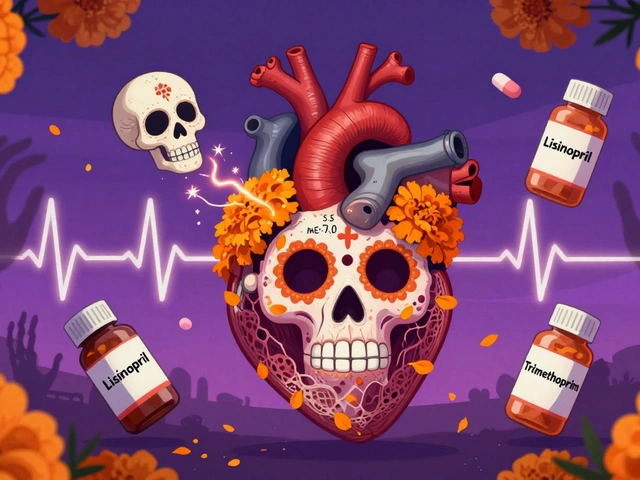Most people assume that if a generic pill looks different from the brand-name version, it’s just a cheaper copy of the same thing. But what if the difference isn’t just in the price or the color? What if the real issue is hidden in the inactive ingredients-the stuff that’s not supposed to do anything, but sometimes causes real problems?
What Are Inactive Ingredients, Really?
Inactive ingredients, also called excipients, are the non-drug parts of a pill. They don’t treat your condition. They don’t lower blood pressure or kill bacteria. But they do hold the medicine together, help it dissolve in your stomach, make it easier to swallow, or even give it a flavor so kids don’t spit it out.
Here’s the surprising part: more than half of every pill you take is made up of these inactive ingredients. Some pills are over 95% filler. That means if you’re swallowing a 100-milligram tablet of a blood pressure drug, you might be swallowing 90 milligrams of starch, lactose, dyes, or preservatives.
These ingredients are chosen because they’re considered safe by regulators. But safe for whom? For most people, yes. But for someone with a gluten intolerance, a dairy allergy, or severe asthma? It’s a different story.
Why Generic Medications Can Be Different
By law, generic drugs must contain the exact same active ingredient as the brand-name version. They must also prove they work the same way in your body-this is called bioequivalence. That part is tightly controlled.
But when it comes to inactive ingredients? There are no rules. Manufacturers of generic drugs can use whatever fillers, coatings, or dyes they want-as long as they’re FDA-approved for use in medications. That means two different brands of generic levothyroxine might have completely different ingredients in them.
One version might use lactose as a filler. Another might use cornstarch. One might have red dye #40. Another might be dye-free. And you won’t know unless you look it up-or ask your pharmacist.
Common Problematic Ingredients
Some inactive ingredients are more likely to cause trouble than others. Here are the big ones:
- Lactose - Found in about 20% of all oral medications. If you’re lactose intolerant, this can cause bloating, cramps, and diarrhea.
- Gluten - Not always listed, even though it’s used as a binder in some pills. For people with celiac disease, even tiny amounts can trigger an immune reaction.
- Bisulfites - Used as preservatives in some injectables and inhalers. Can cause severe asthma attacks in sensitive people.
- FD&C dyes - Red 40, Yellow 5, Blue 1. These are linked to skin rashes and hyperactivity in kids. Some adults report headaches or migraines after exposure.
- FODMAP sugars - Like lactose, fructose, and sorbitol. These are common in liquid meds and chewables. They’re a nightmare for people with IBS.
And here’s the kicker: manufacturers aren’t required to warn you about most of these. Only bisulfites and peanut oil (yes, peanut oil is used in some medications) must be labeled. Everything else? You’re on your own.

Real Stories: When Generic Switches Go Wrong
It’s not just theory. People are reporting real reactions.
A woman in Calgary switched from brand-name Synthroid to a generic version of levothyroxine and started having severe stomach cramps. Her thyroid levels were normal. Her doctor said everything looked fine. But when she switched back to the brand, the cramps disappeared. She didn’t have a new food allergy. It was the filler.
On Reddit, dozens of users share similar stories: rashes after switching to a generic version of metformin, migraines after a new generic of amoxicillin, nausea after a different generic of lisinopril. Many say their doctors dismissed them-until they did the research themselves.
A 2022 survey by MedShadow found that 27% of people who switched to generics reported new side effects. Of those, 68% blamed the inactive ingredients. That’s not a small number. That’s one in four people.
What the Science Says
Researchers at MIT and Brigham and Women’s Hospital analyzed over 1,000 medications and found that 93% contained at least one ingredient that could trigger a reaction in someone with a known sensitivity. About 55% contained FODMAP sugars. Nearly half had dyes or preservatives linked to allergic responses.
One study looked at blood pressure meds after generics hit the market. Adverse event reports jumped: 8% higher for losartan, 12% for valsartan, 14% for candesartan. Was it the inactive ingredients? No one can say for sure. But the timing matches.
And here’s another thing: the FDA allows up to 20% variation in how much active ingredient is in a generic compared to the brand. But in reality, most generics vary by only 4%. That’s not the problem. The problem is the fillers.
Who’s at Risk?
You’re more likely to have problems with inactive ingredients if you:
- Have celiac disease or a gluten sensitivity
- Are lactose intolerant
- Have asthma, especially if you’ve had reactions to sulfites before
- Have IBS or other digestive disorders
- Are allergic to food dyes or preservatives
- Take five or more medications a day (polypharmacy)
- Are over 65
People on multiple meds are especially vulnerable. Why? Because every pill adds another layer of potential irritants. Over time, those small exposures can add up. A 2019 MIT study found that for older adults on five or more drugs, it’s nearly impossible to find a combination that avoids all common allergens.

What You Can Do
You don’t have to stop taking generics. Most people switch without any issues. But if you’ve had unexplained side effects after switching, here’s what to do:
- Check the label - Look at the Drug Facts or Patient Information leaflet inside the box. It lists all inactive ingredients.
- Ask your pharmacist - They have access to databases that show exactly what’s in each generic version. Ask: “Is this the same filler as my old brand?”
- Use the FDA’s Inactive Ingredient Database - It’s not user-friendly, but it’s free. Search by drug name and find all approved excipients.
- Keep a symptom log - Note when you switched meds and when symptoms started. Share this with your doctor.
- Request a specific generic - If you know a certain brand works for you, ask your doctor to write “Dispense as written” or “Do not substitute” on the prescription.
Some pharmacies now offer “hypoallergenic” generics-formulations without dyes, gluten, or lactose. They’re not common, but they’re becoming more available. Ask.
The Bigger Picture
Generic drugs save the U.S. healthcare system over $300 billion a year. That’s huge. But cost shouldn’t come at the cost of safety for people with sensitivities.
Right now, the system treats all patients the same. But we’re not all the same. One person’s harmless filler is another person’s trigger.
Advocates are pushing for better labeling-clear warnings for gluten, lactose, and dyes on every pill bottle. Some researchers are even building databases to help doctors and patients match meds to individual tolerances.
Until then, awareness is your best tool. Don’t assume a generic is just a cheaper version of the same pill. It’s a different formulation. And for some people, that difference matters.
Bottom Line
Generic medications are safe for most people. But they’re not identical to brand-name drugs when it comes to what’s inside the pill-just not the active ingredient. If you’ve had unexplained symptoms after switching, it’s worth looking into the fillers. Talk to your pharmacist. Check the label. Keep track of your reactions.
Your health isn’t just about what the drug does. It’s also about what it’s made of.








